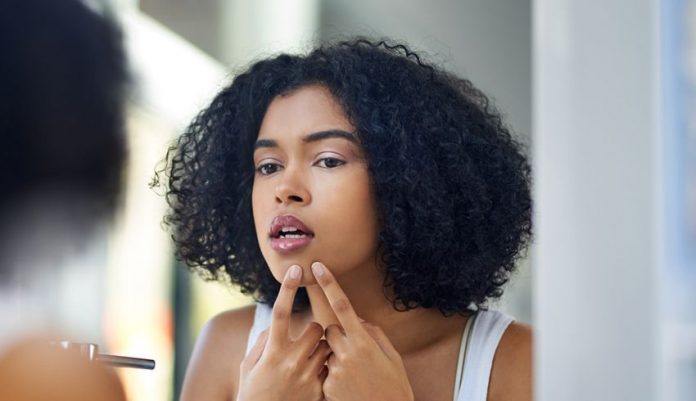No doctor’s visit required.
We’ve all been there: A pimple pops up seemingly overnight and you need to get rid of it, stat. While it may be tempting to pick and pop it into oblivion, there are plenty of better at-home, DIY ways to deal with acne (even the stubborn, cystic kind) in a way that won’t leave you with a scar.
“Pimples can be stubborn, and depending on what type of pimple it is, they can be frustrating to treat,” said Dr. Lauren Abramowitz, a board-certified PA-C (physician’s assistant) and founder of Park Avenue Skin Solutions and co-founder of the Tribeca Wellness Collective. “The most important thing is to NOT pick the pimple. The more you pick at it, the slower the healing time.”
Instead, there are a number of natural ingredients that you can incorporate into your skin care routine to get the job done. Here, the experts lay out exactly how to treat even the peskiest pimples at home — no doctor’s visit required.
10 home remedies for acne
1. Avocado oilJust when you thought you couldn’t love avocado more, we found an entirely new use for them: as skin care. “Avocado oil is rich in linoleic acid, linolenic acid and oleic acid, minerals and vitamins A, C, D, and E,” Dr. David Lortscher, founder of Curlogy, told TODAY Style, noting that it can be used topically to fight off free radicals and achieve radiant skin. “It is an excellent source of enrichment for dry, damaged or chapped skin.”
2. Colloidal oatmealWhen oat kernels are ground into a fine powder, they supply antioxidants and relief for dry, irritated skin. Dr. Lortscher suggests looking for this as an ingredient in the drugstore aisle, calling out Eucerin Skin Calming Lotion as one of his favorite over-the-counter colloidal oatmeal products.
3. IceIt may sound like an old wive’s tale, but icing out your pimples can actually be one of the best way to treat pesky, swollen suckers. “Ice wrapped in a thin cloth applied on and off can help to bring down inflammation as well as over-the-counter hydrocortisone cream for spot treatment,” said Abramowitz.
4. AloeYou’ve probably used aloe to heal a sunburn, but you may not know that it can be used to treat acne, too. “(It’s) well known for its skin-soothing and skin-healing properties (and is) great for the skin,” said Dr. Lortscher, who recommends Burt’s Bee’s Daily Facial Moisturizer since it touts aloe as one of its active ingredients.
5. Egg whites”Egg whites have been touted as a home remedy for wrinkles as well as acne blemishes — some people whip them into a meringue and then let this dry on their face, or mix the egg whites with other DIY ingredients,” said Lortscher. “As this dries, it does form a film on the skin that gives a ‘tight’ feeling. But any wrinkle reduction would be very temporary (think minutes after washing this off).”
6. QuinoaHere’s one more trendy superfood that’s made its way into the skin care space. “When used as a physical exfoliator, cooked quinoa can be a gentle scrub — both non-abrasive and friendly to the environment — unlike the polyethylene microbeads contained in some exfoliating cleansers,” said Lortscher, who suggests Pacifica’s Quinoa Sensitive Super Gentle Face Wash for treating acne at home.
7. Clean dietIf your digestive system is upset, it may show itself by way of a breakout. “Try and avoid sugar and dairy as bacteria feeds off of it and, depending on the patients genetic makeup, it can make the acne worse,” said Abramowitz. If you’re seeing a pattern of deep, cystic acne, talk to your doctor to see if it could be linked to your diet.
8. Honey”Honey has been used for thousands of years for medicinal purposes; its beneficial effect is presumed due to antibacterial activity,” said Lortscher. “Medical grade honeys, such as manuka honey and Medihoney, have been used for treatment of conditions such as ulcers and wounds. Although pure honey is likely fine in most cases to use on the skin for acne and other skin problems, non-medical grade honey may contain viable bacterial spores and manifest less predictable antibacterial properties.”
Look for masks with manuka honey, or use the ingredient straight (you can find it online or at most healthfood stores) as a soothing — and even delicious — antibacterial mask.
9. Apple cider vinegar as tonerApple cider vinegar is popular as a cure-all for many applications, but be cautious while using. “Vinegar is an acid and will be somewhat unfriendly to bacteria and encourage some mild exfoliation,” said Lortscher. “Gradually introduce this to your skin before jumping all in. Some people do like to use apple cider vinegar as a toner. I do not advise using a full-strength application, as that can burn sensitive skin. Instead, dilute the vinegar one part to four parts water before using.”
Be sure to spot test the mixture on your hand or the inside of your arm before using it on your face to make sure your skin can handle it.
10. LightIt may surprise you, but applying certain lights to your pesky skin problems can actually be just as effective as applying fancy lotions and creams. “Blue light serves as a disinfectant and helps kill bacteria that causes acne. Red light helps with inflammation,” said Abramowitz. To reap the benefits at home, try an LED mask like the Neutrogena Light Therapy Acne Mask.
Ingredients to stay away from if you’re dealing with acne:
While there are plenty of natural ingredients that can work wonders for your skin, there are a few you should be sure to steer clear of during a breakout:
Coconut oil: “Contrary to popular belief, most oils are well-tolerated on acne-prone skin. However, coconut oil commonly blocks pores. Many people will find that clogged pores and acne breakout begin or are worsened when coconut oil is used on facial skin,” said Lortscher.Lemon juice: “Though many believe lemon juice can be a remedy for dark spots, it can cause significant dryness, redness and irritation,” said Lortscher. And be sure not to mix lemon and apple cider vinegar, a combo that can cause burning.Baking soda: “Some people try baking soda as a cost-effective scrub or mask, but scrubbing your face with a paste of baking soda is very harsh and would disturb your skin’s natural barrier,” said Lortscher. “Your skin could be become red, raw and sensitive, leading to an acne breakout.”




























